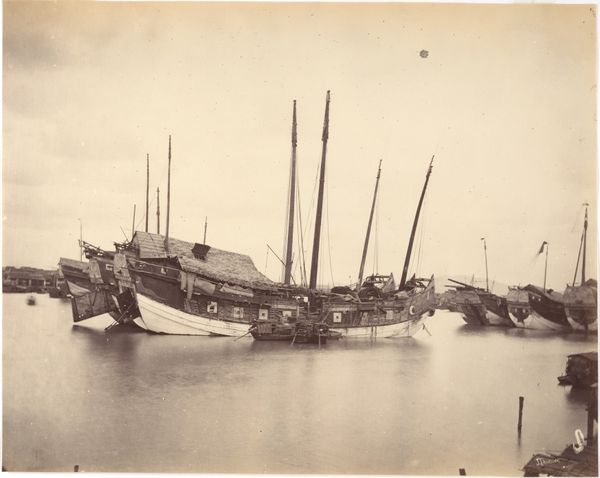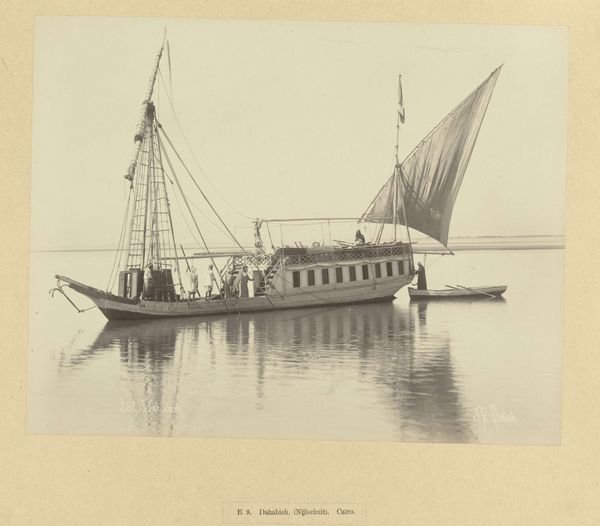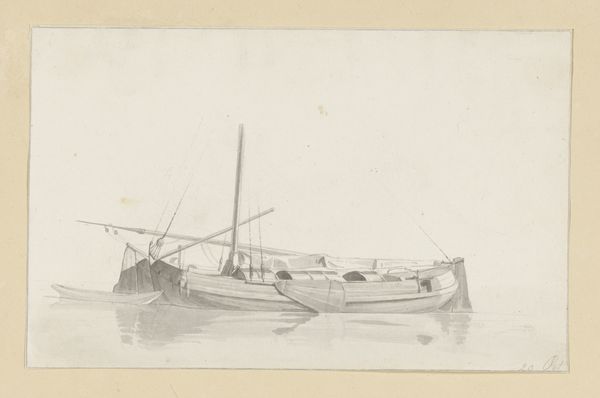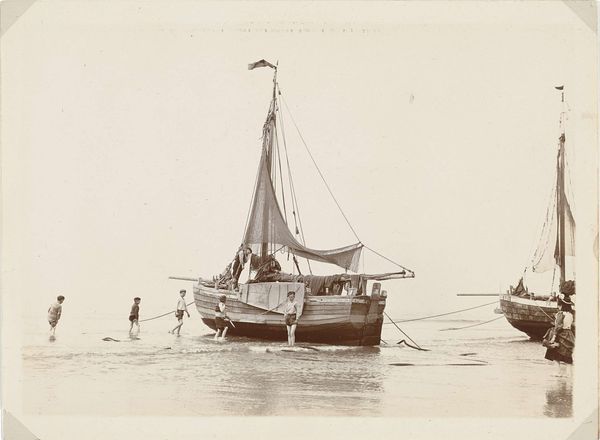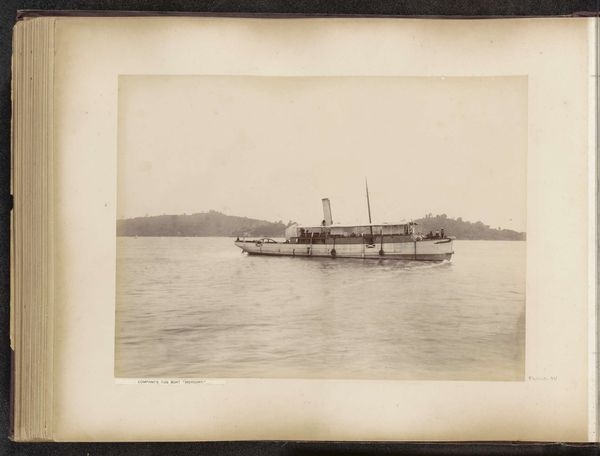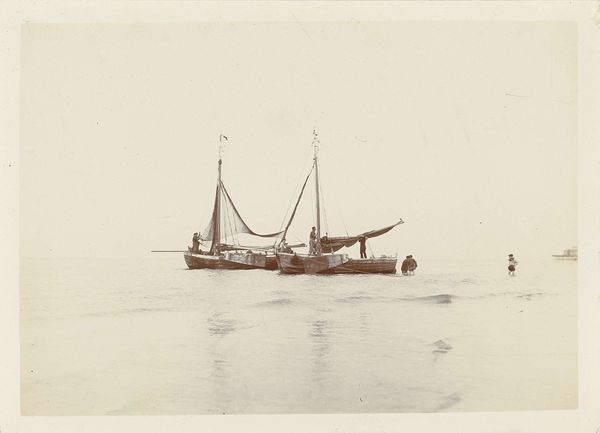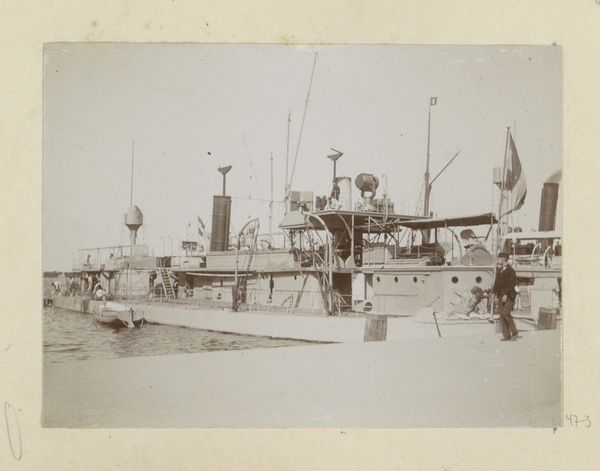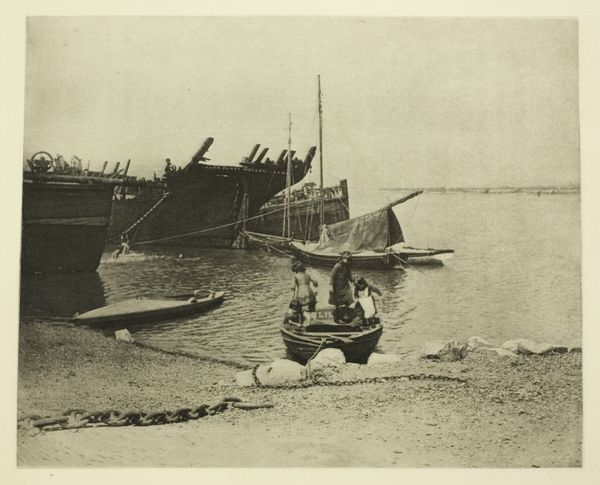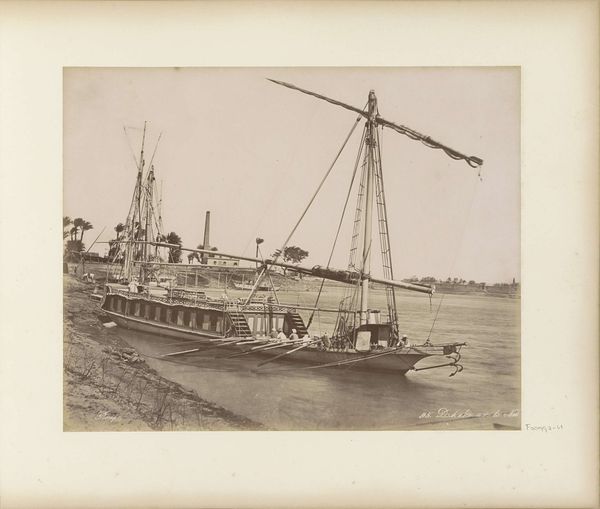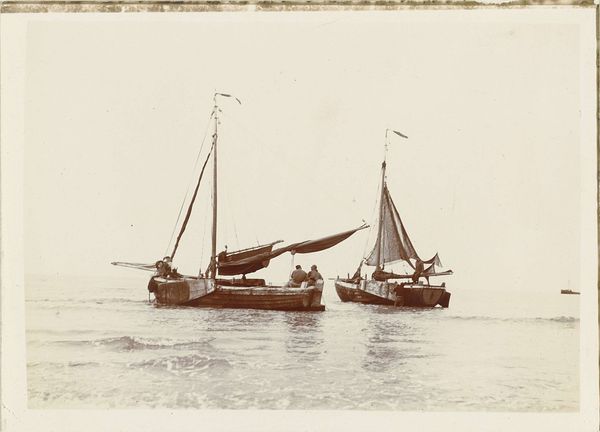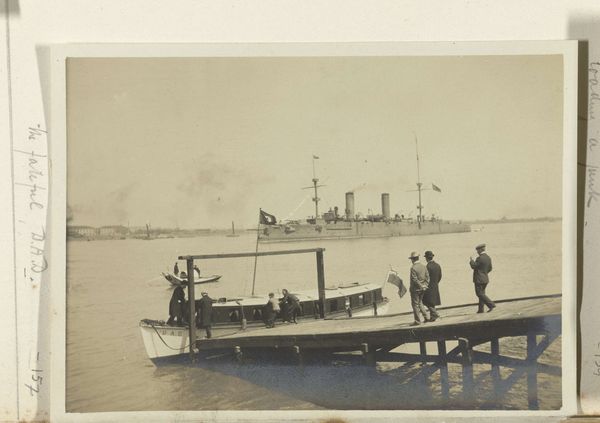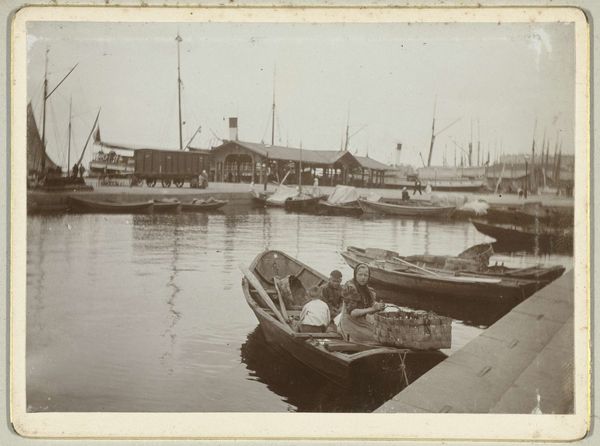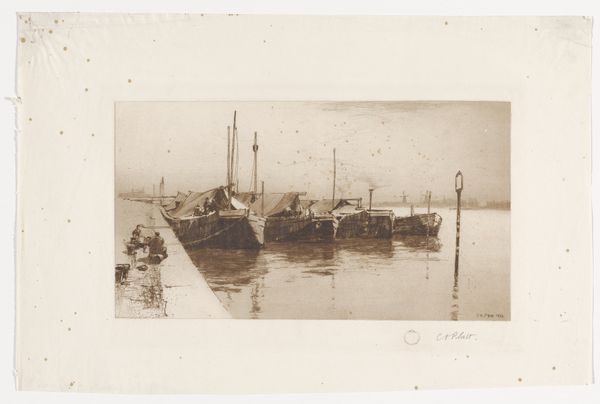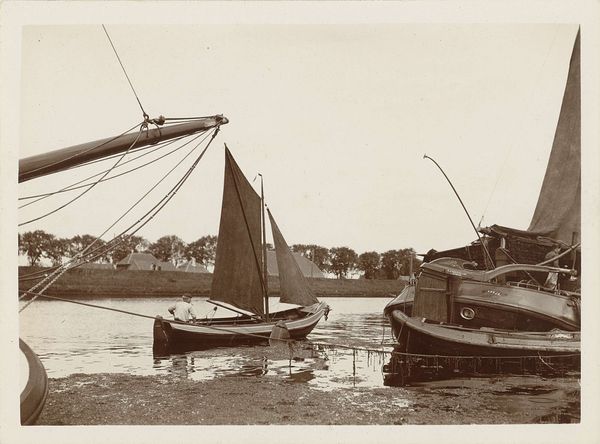
photography, gelatin-silver-print
#
landscape
#
photography
#
orientalism
#
gelatin-silver-print
Dimensions: height 100 mm, width 74 mm, height 363 mm, width 268 mm
Copyright: Rijks Museum: Open Domain
Curator: We're looking at a photograph titled "Loading a Junk," taken before 1908. The photographer is Geldolph Adriaan Kessler, and it’s a gelatin-silver print currently held in the Rijksmuseum. Editor: It’s remarkably hazy. That, combined with the tones, creates an overall feeling of distance, of a scene witnessed from afar, or perhaps long ago. The vertical masts strongly emphasize height, while the jumbled small boats in the foreground suggest an energy of labour. Curator: Indeed. Kessler's interest clearly lies in capturing a slice of what, at the time, was termed “the Orient.” Works like this provided glimpses into what were then exoticized cultures, fitting neatly within the then-dominant paradigm of Orientalism, where Asia was often presented as mysterious, static and other. Editor: Semiotically, then, the composition presents certain assumptions. The stillness in the water suggests tranquility, whilst that implied distance – is it deliberate? Perhaps its positioning encourages a particular interpretation from the viewer – that of observer. There’s a tension between calm observation and underlying hard, practical labour. Curator: Exactly! Remember, this photograph wasn't created in a vacuum. It reflects the power dynamics between the West and East at the turn of the century, where exotic locales were actively consumed via photograph or print. The lack of detailed foreground puts some space between "us" the assumed European viewers, and "them", the anonymous people working. Editor: Still, focusing solely on the implied societal gaze limits its reading as a photograph. Observe the strong diagonals in the pier; the tonal range, subtle despite the aged quality of the print. Regardless of contextualization, those are undeniably effective formal devices. Curator: And it's precisely in considering how photographs such as these operated within specific exhibition and distribution networks that we can understand how perceptions of otherness were so effectively shaped. They contributed to a visual culture deeply entangled with colonialism. Editor: Perhaps. But that also speaks to a timeless dialogue: how aesthetic presentation impacts broader sociopolitical discourse. Regardless of Geldolph's possible intent, his visual choices invite us to reflect not just upon social narratives but upon those compositional ones, too.
Comments
No comments
Be the first to comment and join the conversation on the ultimate creative platform.
